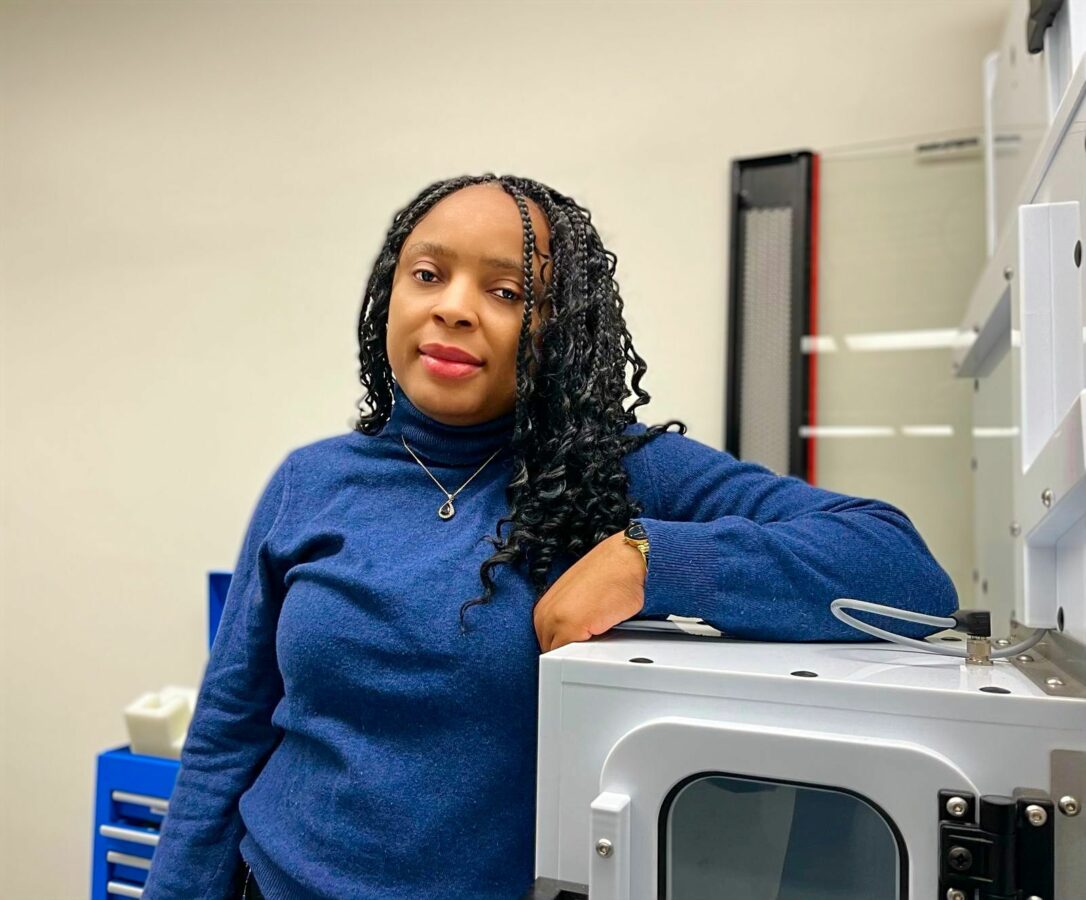Rita Aksenfeld | Sept 10, 2024
To understand our universe, its evolution, and its fate, scientists need to study an invisible substance called dark matter. Scientists theorize that dark matter, due to its gravitational force, acted as a glue to enable the formation of large scale structures, like our own Milky Way galaxy.
Recently, scientists have built a highly sensitive instrument to detect dark matter particles and provide clear evidence for their existence. However, there are many other known particles that could be mistaken for dark matter, and an immense amount of work is required to eliminate these false positives. UCLA Assistant Professor of Physics Alvine Kamaha won the highly selective Department of Energy Office of Science Early Career Research Program award to fund her work on preventing false positives in the most sensitive dark matter detectors ever built.
Kamaha is an expert in one of the most sensitive dark matter detector technologies to date: the dual-phase liquid/gas xenon time projection chamber. These detectors work by flashing light and releasing electrons when a particle initially hits the liquid xenon. The electrons then drift to the top of the detector where they interact within a xenon gas volume to produce a second light via electroluminescence, just like how a neon sign produces light when plugged into electricity. “So the two signatures we have help us to constrain what type of particle it is,” explains Kamaha. In other words, the characteristics of these two lights can be used to identify the particle that hit the xenon in the detector, and determine whether it is dark matter.
Kamaha plans to create a library of these signatures for some known types of particles that could be mistaken for dark matter. As Kamaha explains, “the day a liquid xenon detector claims a dark matter discovery, we want to ensure that it’s not something that fits within the library of known particle signals that we have understood and classified.” This way, scientists can be sure that any new particle they detect really is dark matter. These measurements will be done in collaboration with Professor Kaixuan Ni at UCSD.
This work is vital to make sure that scientists are extremely sure of their findings before announcing them. “The sensitivity of direct dark matter detection experiments depends crucially on the identification, control, and discrimination of background signals and precise calibration of the liquid xenon-based detection instrumentation,” says Professor Stuart Brown, Chair of UCLA’s Physics and Astronomy Department. “Professor Kamaha has led aspects of this very important effort, and her receipt of the DOE Early Career Research Scientist serves to recognize her achievements while offering a unique opportunity to enhance her work as a UCLA Professor.”
Tags: Awards, Dark matter, Faculty News
 Professor Alvine Kamaha in her laboratory.
Professor Alvine Kamaha in her laboratory.